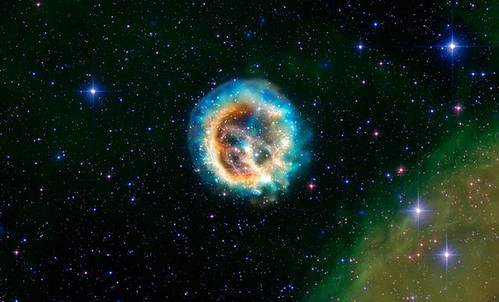The universe will never cease to amaze, and these stellar supernovae shots from NASA's Marshall Space Flight Center serve to prove that fact.
They're all from flickr, so the resolution is awesome. It's amazing to me, as I'm culling through the wealth of supernovae imagery available online, that anyone with a computer could ever say they were bored. Practically all of us have a computer in our pockets with access to more information than was contained in the libraries of the world's wealthiest men just twenty years ago — and I'd be willing to bet none of them had access to imagery like this. It's no excuse for not getting out and enjoying the world around us, but on a rainy day, it's certainly a solid backup plan!
1.)
Name: E0102-72.3
Distance from Earth: ~190,000 light years
Details: E0102 is located in one of the nearest galaxies to our own — the Small Magellanic Cloud. It was first observed shortly after Chandra's launch in 2009, but the explosion itself was likely visible in the Earth's Southern Hemisphere about 1,000 years ago when it took place.
